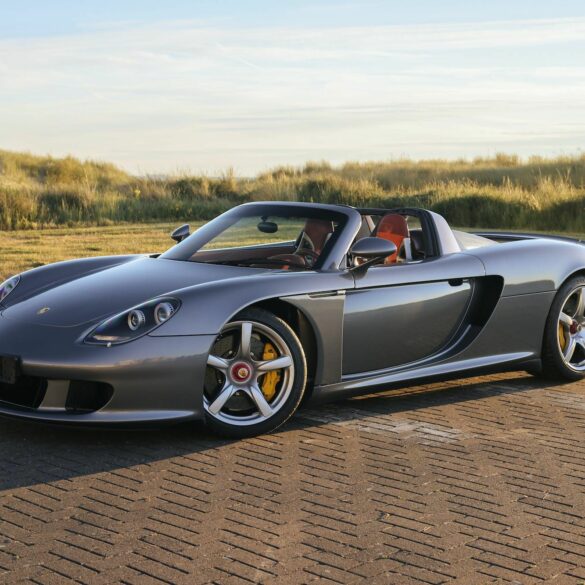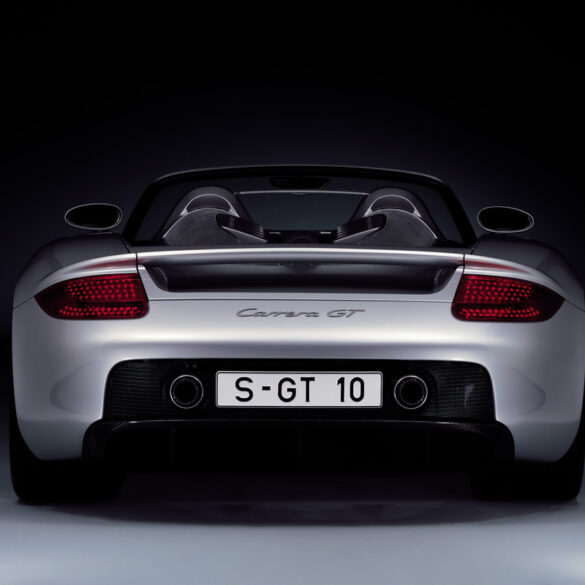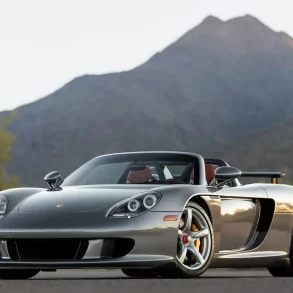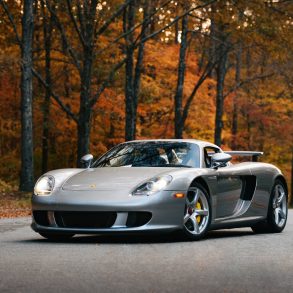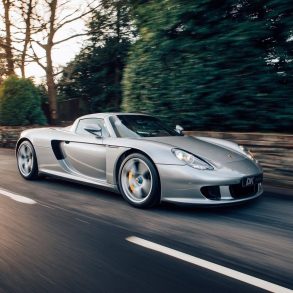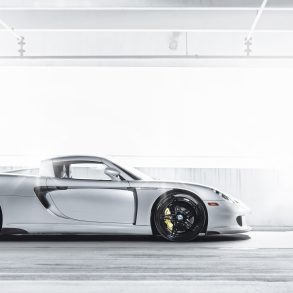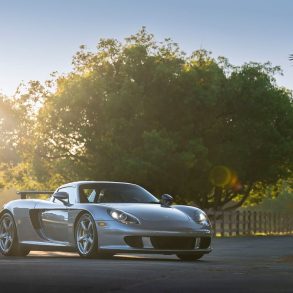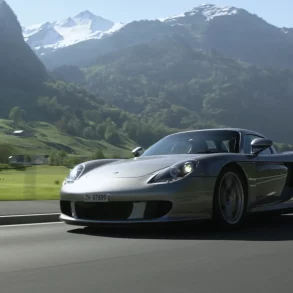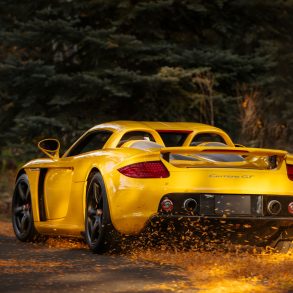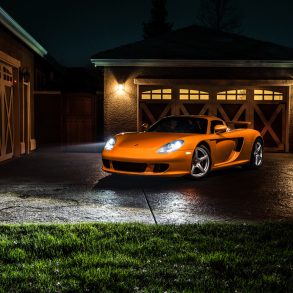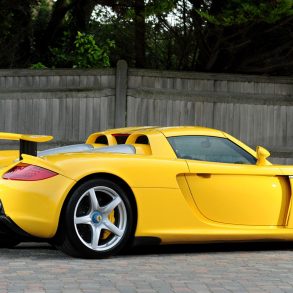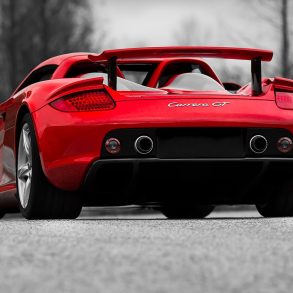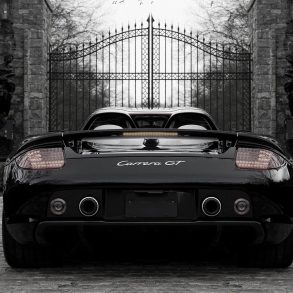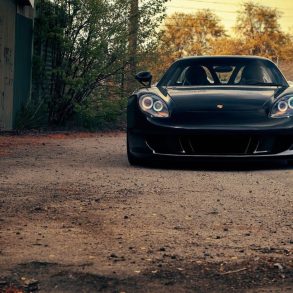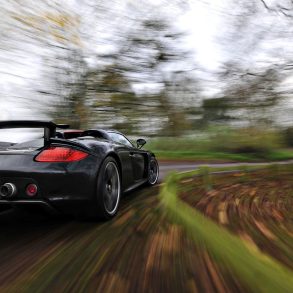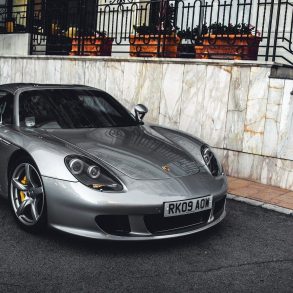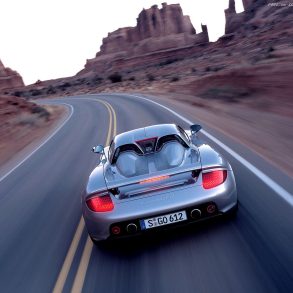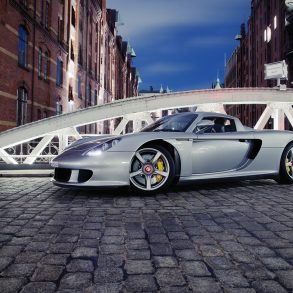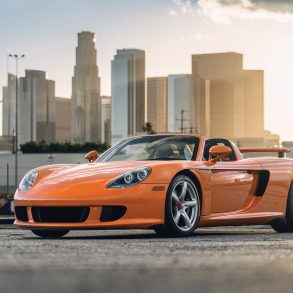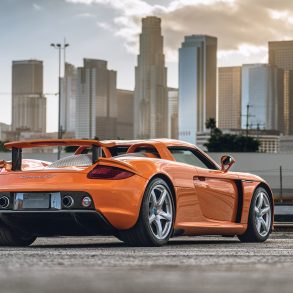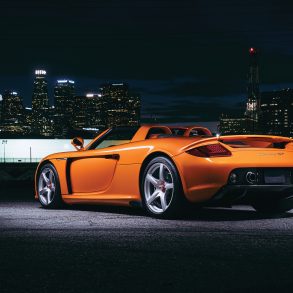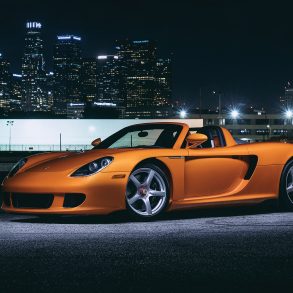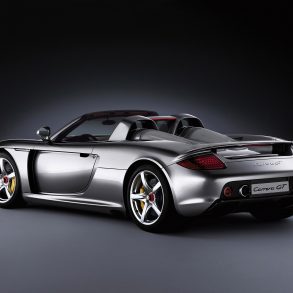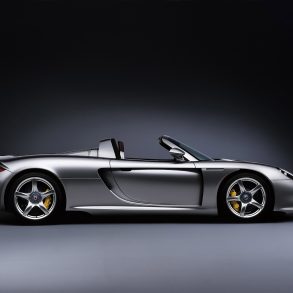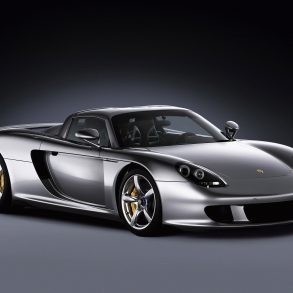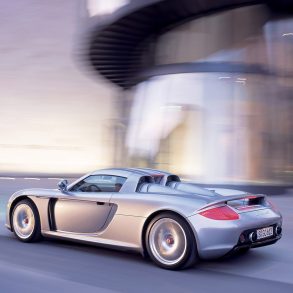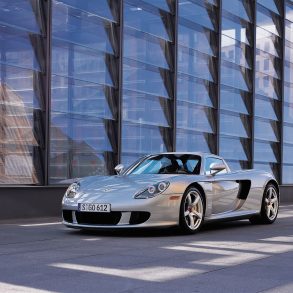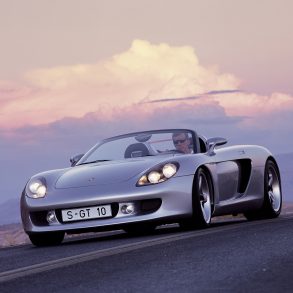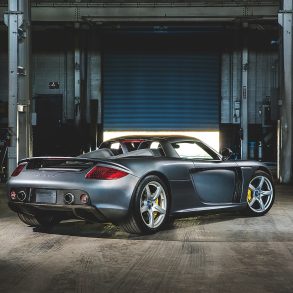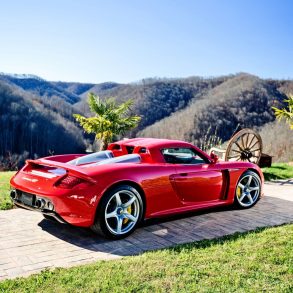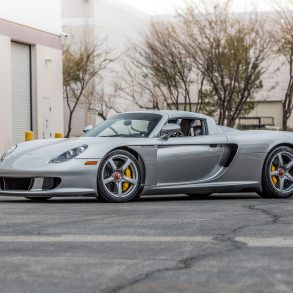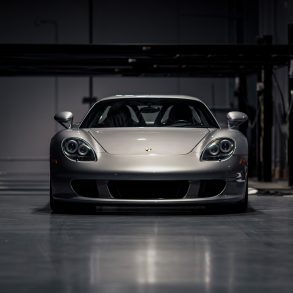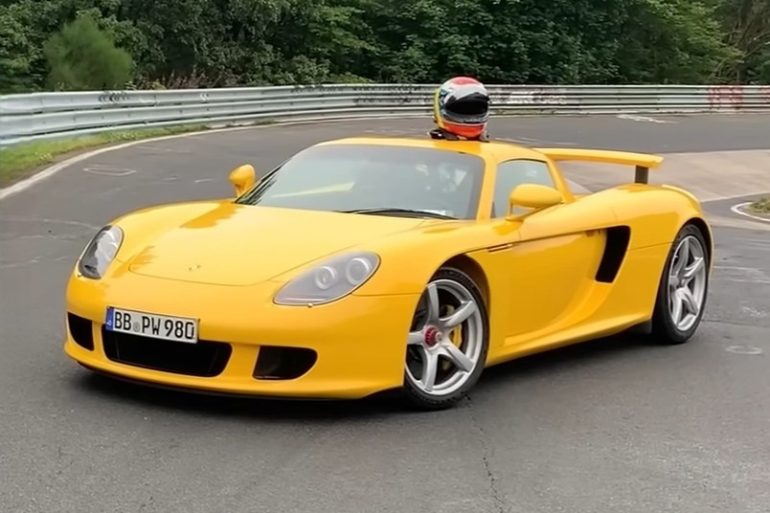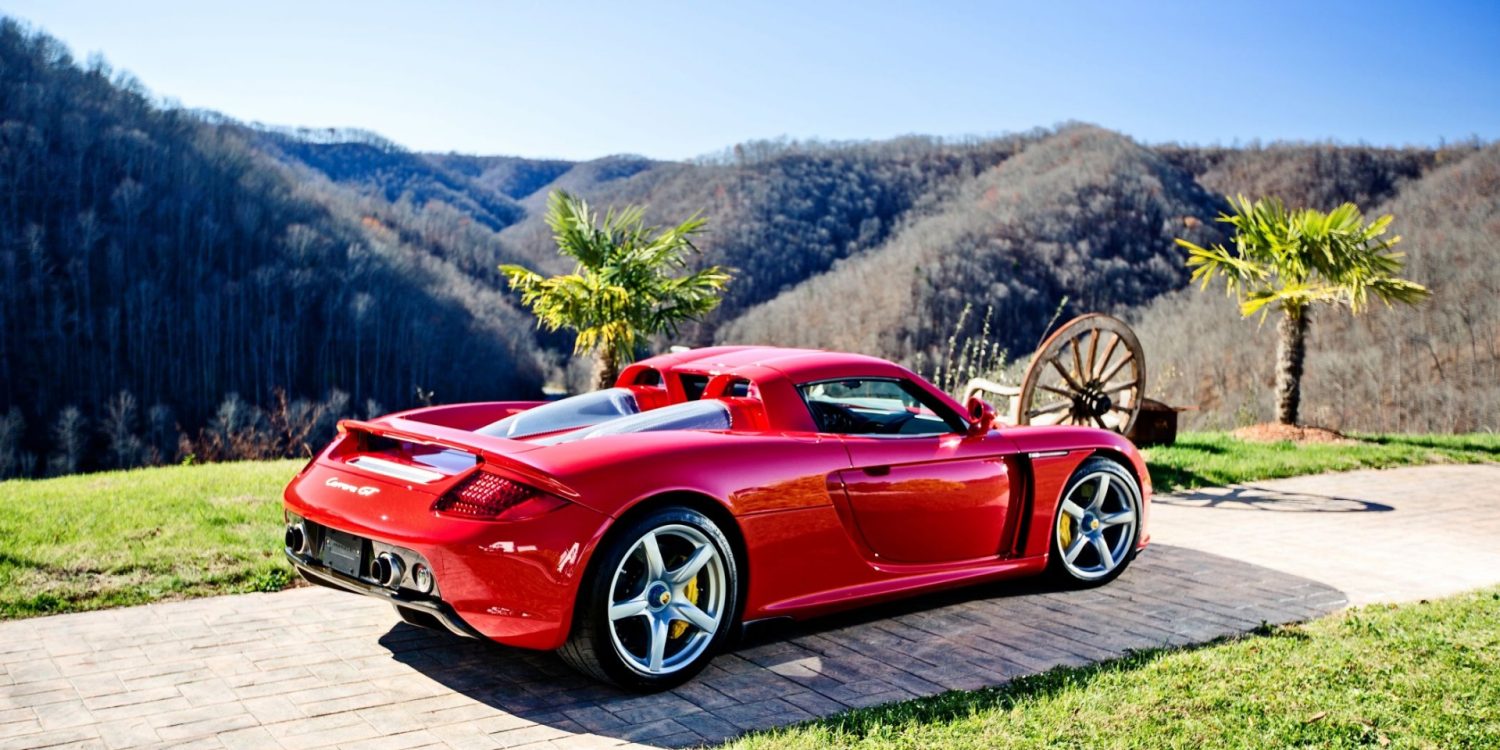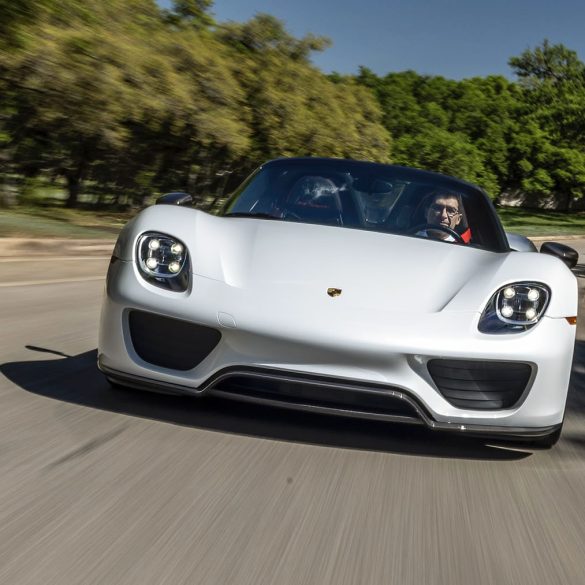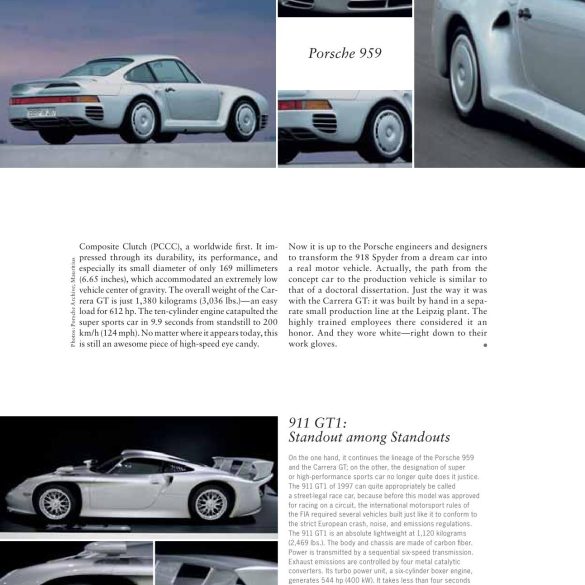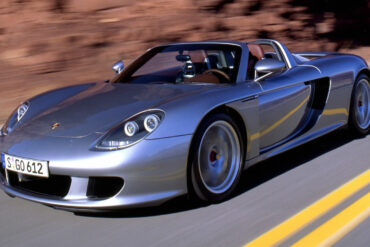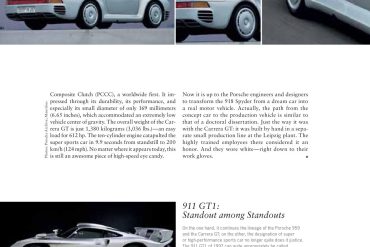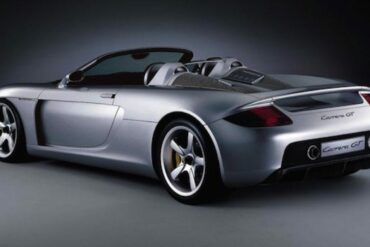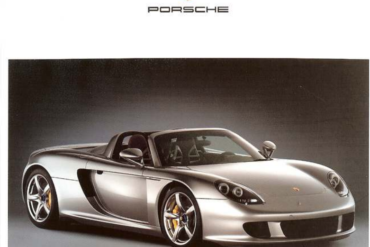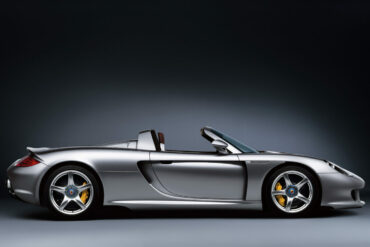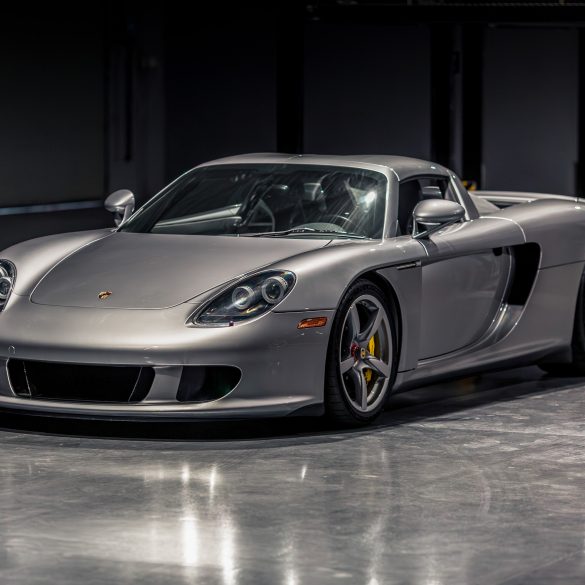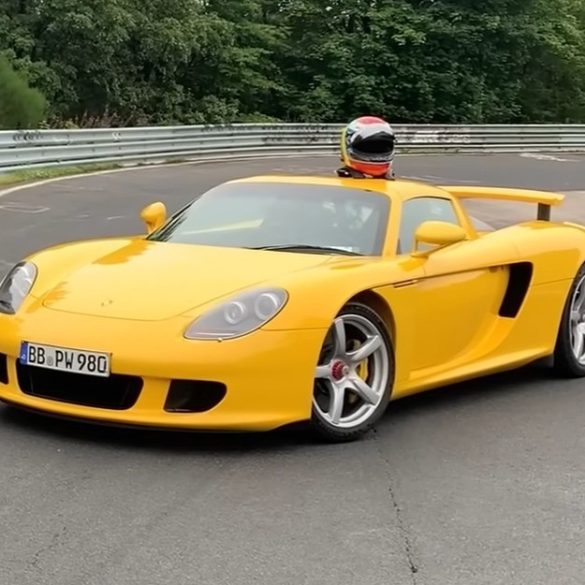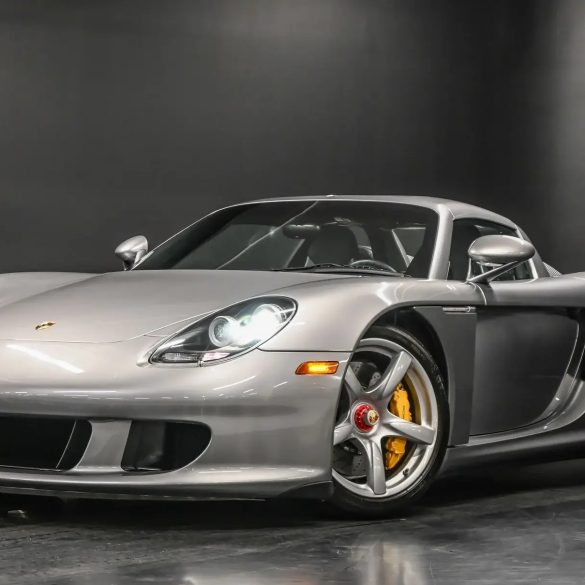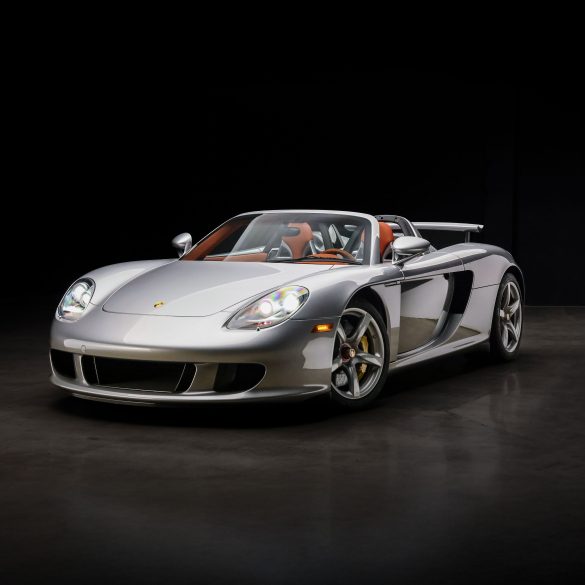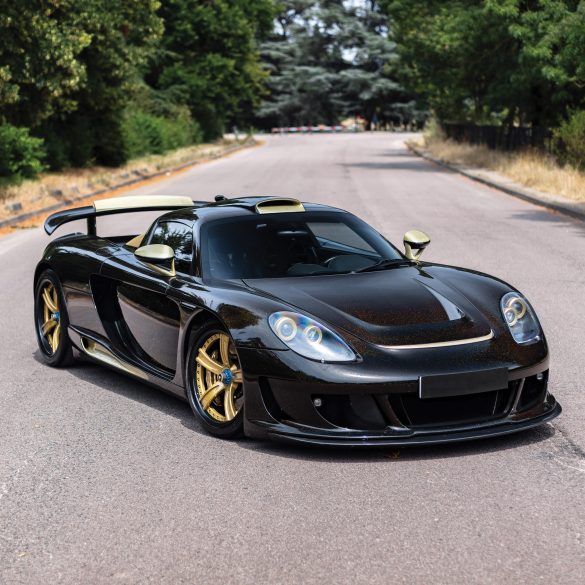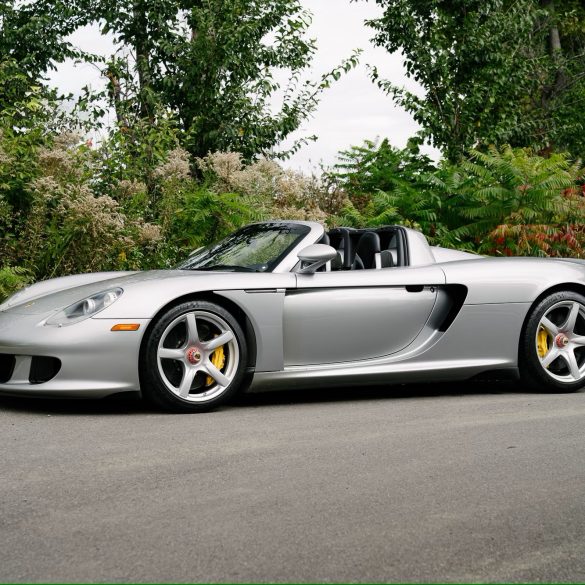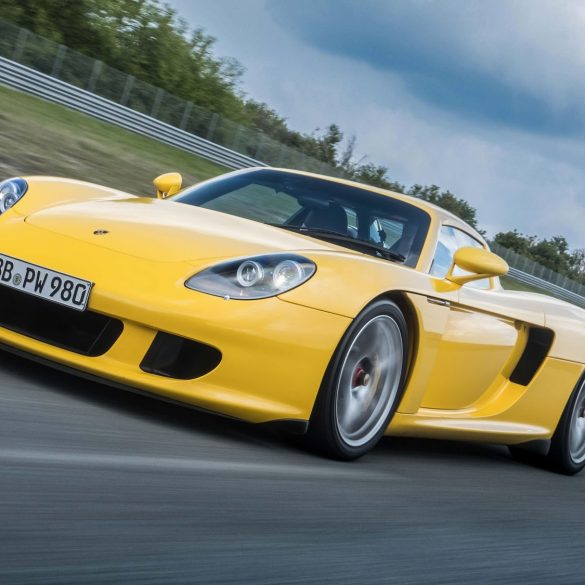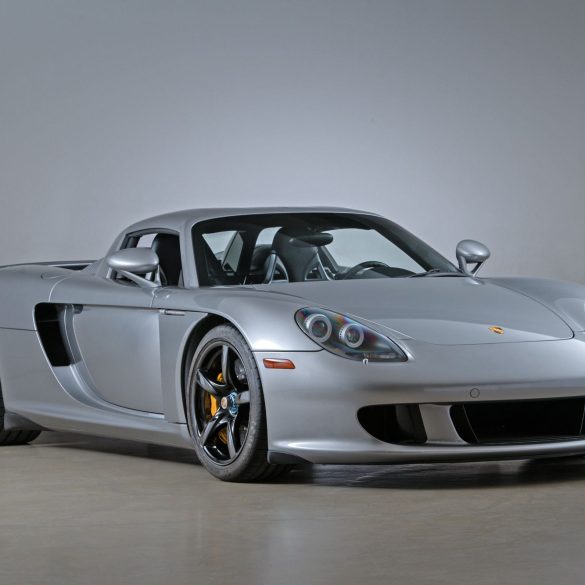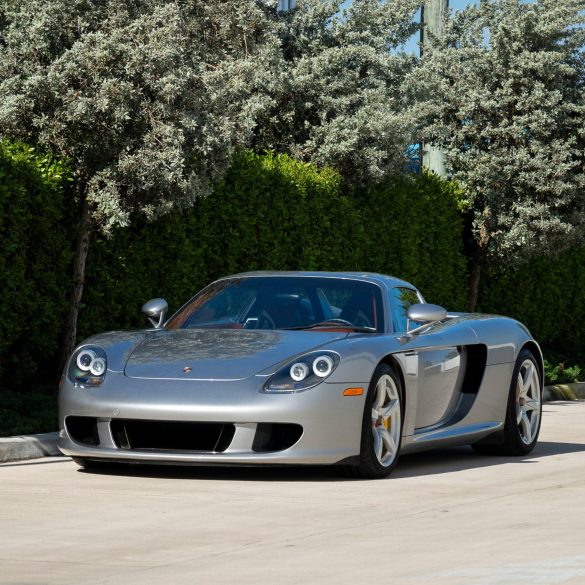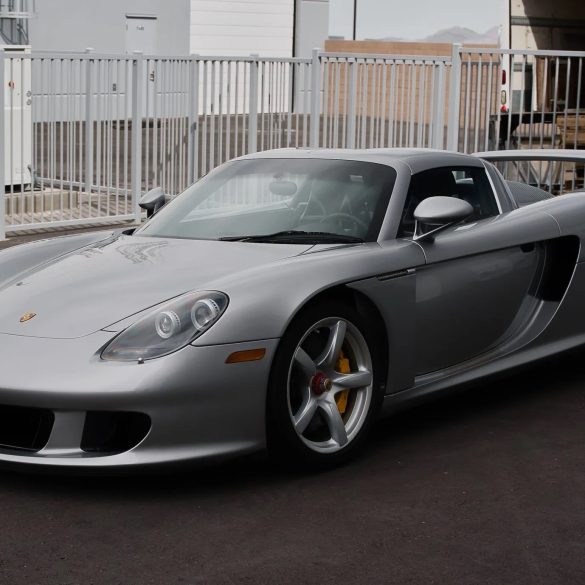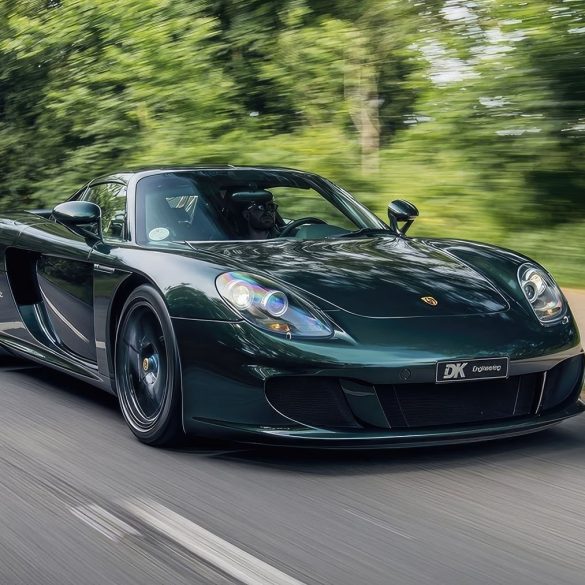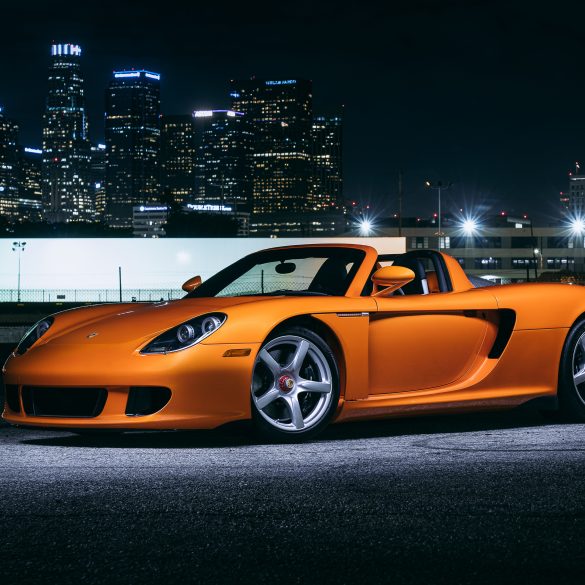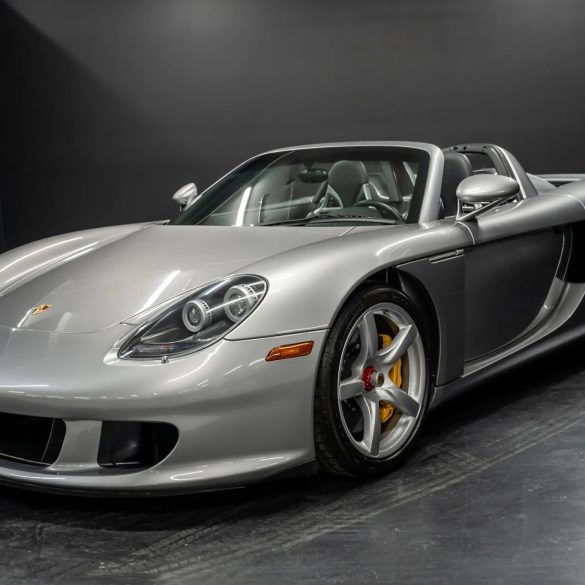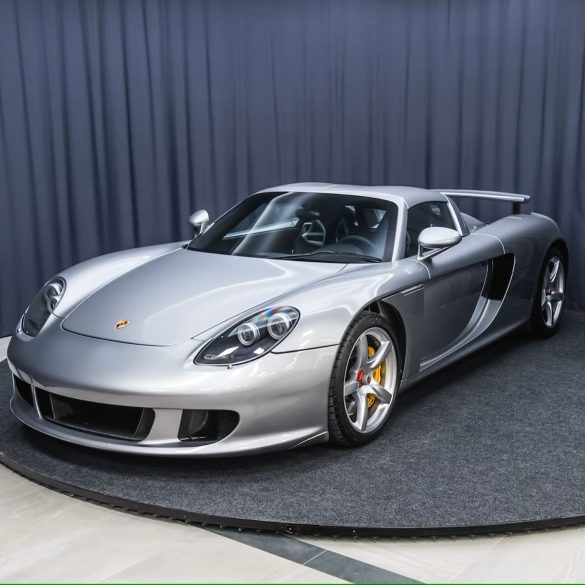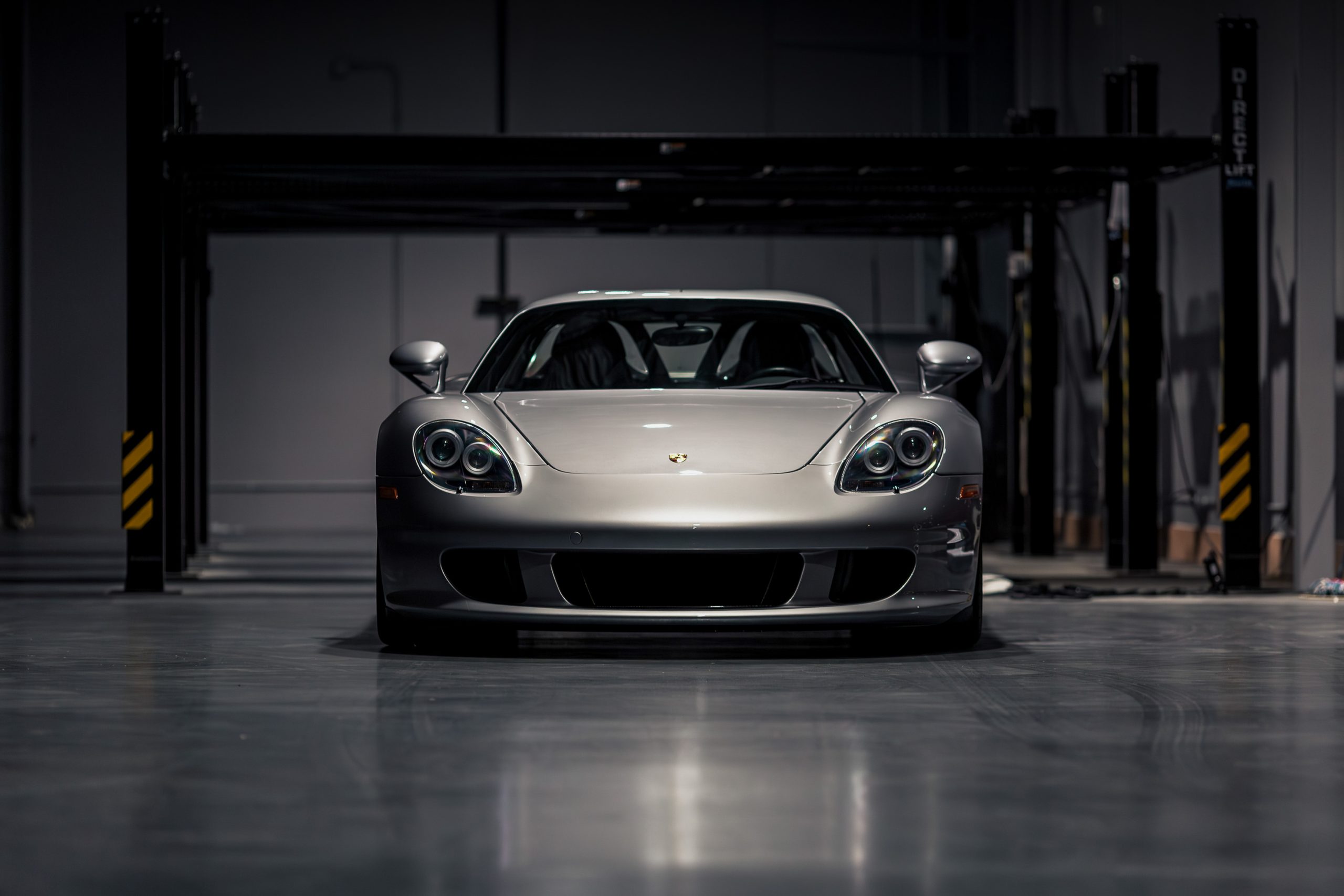Porsche Carrera GT - Ultimate Guide
A Race-Bred V10 Supercar That Redefined Porsche’s Legacy
The Story / Model Guides / Data & Research / Pictures & Videos / FAQs / News & Updates
Porsche Carrera GT Basics
Manufacturer: Porsche AG
Production Years: 2003 - 2007
Production: 1,270 units
Body Style: 2-Door Roadster
Layout: Rear mid-engine
Drive: Rear-wheel-drive layout
Engine: 5.7 L 980/01 Nat-Aspirated DOHC V10
Transmission: 6-speed manual
Power: 605 bhp @ 8000 rpm
Torque: 435 ft lbs @ 5750 rpm
Premiere: 2003 March 5
Premiered at: Geneva Motor Show
Predecessor: Porsche 911 GT1
Successor: Porsche 918 Spyder
Few cars in history have achieved the same level of legend, respect, and outright fear as the Porsche Carrera GT. Born from Le Mans prototype technology, powered by an exotic 5.7L V10 engine, and paired with a manual-only transmission, the Carrera GT remains one of the purest and most exhilarating driver’s cars ever built. Launched in 2003, it was Porsche’s first true hypercar, setting new benchmarks for performance, engineering, and raw driving experience. Even today, nearly two decades after its debut, the Carrera GT is regarded as one of the greatest analog supercars of all time.
At the heart of the Carrera GT is its naturally aspirated V10, originally developed for Porsche’s abandoned LMP2000 Le Mans race car. Unlike modern hypercars that rely on turbocharging or hybrid power, the Carrera GT delivers its 612 horsepower at a screaming 8,400 rpm, with a sound that rivals Formula 1 engines. Power is sent exclusively to the rear wheels via a six-speed manual transmission, making it one of the last great analog supercars before the era of paddle-shift automatics and electronic driver aids. The Carrera GT demands absolute respect from its driver—its lack of stability control, lightweight carbon-fiber chassis, and race-bred clutch make it a thrilling but unforgiving machine, a characteristic that has cemented its reputation as both a dream car and a beast to tame.
From its exquisite design and carbon monocoque construction to its incredible driving dynamics, the Carrera GT remains a true collector’s piece and a future-proof investment. With only 1,270 units ever built, its exclusivity, heritage, and raw performance ensure that it will always be one of Porsche’s most revered creations. In this ultimate guide, we take a deep dive into the history, engineering, performance, production numbers, buying tips, and long-term investment potential of the Porsche Carrera GT—one of the greatest analog supercars ever built.
The Carrera GT Story
The Beginning
Released at the 2003 Geneva Auto Show, Porsche's Carrera GT was a final production version of the concept car first seen at the 2001 Paris Auto Salon. It was Porsche's first limited production supercar since 959 production stopped in 1988. At the time of launch, it was one of the few available products that rivaled the Ferrari Enzo.
Unlike the 911, which carried the company for four decades, the Carrera GT was complete bottom up design. Its styling was thankfully unchanged from Paris show car and departed from the traditional Porsche shape which the 959 couldn't escape.Motivation for the Carrera GT came directly from Porsche's successful motor sports program and the Porsche WSC-95 Le Mans prototype.
After winning Le Mans twice in 1996 and 1997, Porsche revived an old V10 engine for the 1999 season but it was shelved only two days into track testing.
Fortunately, the 5.5 liter V10 was used in a one-of 2001 Paris Auto Salon concept car which was received well enough for production to begin two years later. Final Assembly commenced at Porsche's Leipzig plant and the car sold with an MSRP of $440,000 USD, $515,000 CAD, or €390,000.Under the skin, the car used many modern hallmarks of motor sport engineering: a carbon fiber chassis, dry sump lubrication, inboard suspension and a mid-mounted engine that was engineered to sit as low as possible to ground. Careful attention was also paid to under tray airflow which could be managed better than the rear-engine 911.
A New V10
Porsche's V10 engine can trace its roots back to a unit developed in secret by Porsche for the Footwork Formula One team. This development halted in 1992, but was resurrected for a WSC-95 successor that was never completed. Bored out to 5.5 liters, this unit then found its way into the Carrera GT Prototype. When production commenced, it was modified by Porsche engineers to ensure more power and reliability. Such revisions included a larger displacement which offered more torque and driveability.
This engine is placed in the middle of the chassis in a three-point carbon subframe. This is unlike Paris Show Car which featured its V10 as a load bearing structure within the chassis. Had Porsche not used a subframe, noise leakage and vibration would have hampered interior comfort.
The intake system is equipped with Porsche's VarioCam technology found on the current 996 range. VarioCam continuously adjusts the angle of the intake camshaft to optimize performance and output. Making the engine as light as possible was a primary goal. A light alloy crankcase and titanium connecting rods help the engine have a weight of 452 lbs (205 kg). Compare this to the Enzo's V12 weighing in at 496 lbs (225 kg).
6-Speed with a Ceramic Clutch
Power is transferred to the rear wheels through a newly developed six-speed manual transmission. Attached is a special clutch which has a reduced size and weight. Called Porsche Ceramic Composite Clutch (PCCC), this two-plate clutch is made of ceramic composites. Such materials not only help reduce the rotational masses of the clutch by a factor of ten, but offer less wear than conventional material.
Combined with a lightweight flywheel, rotational mass of the engine is exceptionally light. Another highlight of this clutch is its short diameter of only 6.5 inches (165 mm). At such a height, the transmission and engine are very short and mounted low in the chassis. Just how low? Well the crankshaft rotates just 4.0 inches (102 mm) from the floor and the transmission actually sits lower than the rear differential.
CFP Chassis
Providing a basis for the Carrera GT is a carbon fiber monocoque with carbon-fiber-reinforced plastic (CFP) sub frames. Among the carbon body and carbon frame, metal pieces are few and far between.
For instance on the chassis, the front rails, a-post inserts, fuel cell and suspension are the only major non-carbon elements. The chassis is manufactured by the ATR Composites Group. They are specialist Italian carbon fiber manufacturer which coincidentally make the tubs for the Ferrari Enzo. Production at ATR is two complete chassis per day. A carbon rear sub frame isolates the entire drive train and rear suspension from the chassis. Having the engine completely supported CFP materials is new concept to production car manufacturing.
It was concept developed by Porsche's Motor Racing Division and is subject to patent. Suspension elements include double wishbones with inboard damper and springs on all four wheels.
The inboard dampers and springs are actuated by pushrod and dampers like the setup used by every Formula One constructor.
The Brakes
Braking on all four corners is executed by the capable Porsche Ceramic Composite Brake (PCCB) system and for the first time on fifteen inch rotors. Consisting of ceramic discs and composite pads, the system is lightweight and resistant to corrosion. PCCB reduces the unsprung weight of the braking system by fifty percent.
Four channel ABS comes standard. Attached to the braking system are forged magnesium wheels which weigh less than the tires wrapped around them. Michelin makes the only tire approved for the Carerra GT. They feature a soft compound rubber on the outer one third of the tread. It is suggested by Porsche that these tires need replacement every 15000 miles.
Aerodynamics
A large rear wing provides down force at the rear of the car. As the car reaches 75 mph (120 km/h) it electro-hydraulically raises an additional 6 inches (16 cm) for increased stability. At top speed the combined down force of the front and rear wheels total 639 pounds (290 kgs). Apart from the wing, most of the Carrera GT's down force comes from its under tray.
The entire tray is manufactured from carbon fiber and is attached to the chassis, engine mounts and crash structure. Creating down force with such a device is efficient as it does not impair the car's drag coefficient. A diffuser and air flow ducts provide additional ground effect. Further aerodynamic attention is applied to the lower wishbones. They are made of efficiently shaped steel tubes which do not interfere with the aerodynamics underneath the car.
Electronics
To ensure control under all situations, the Carrera GT has a four channel anti-lock braking system and anti-spin control (ASC) to prevent excessive wheel spin. Traction control is standard. 'Should he/she wish to enjoy the thrill of dynamic driving of the highest racing standard the driver can switch off the complete traction control function by pressing a button in the centre console.' says Porsche.
Comfort
Porsche describe the Carrera's clean interior as a function-oriented ambience and a cockpit free of all extraneous detail. Only high-tech materials such as carbon, magnesium and leather adorn most surfaces. Information is clearly presented in a classic Porsche instrument cluster which replaces the LCD screen featured on the concept car. The car also uses the 911 steering wheel which doesn't follow the F1 trend to stick as many functions on the wheel as possible.
This old-school approach is a refreshing change, contributing to the GT's ambiance and ensuring it will remain a timeless design. Extending into the dash is a centre console covered in magnesium. Attached sits a birch/ash shifter which is the only piece of wood found in this carbon-laden car. It specifically pays homage to Porsche's 917 which sported a balsa-wood gear lever. Balsa was the optimum material for the job, it was extremely light, but most importantly added to the character of the 917.
Amenities such a Bose stereo system and air conditioning are optionally offered. For closed top driving, two carbon fiber panels can be attached to the roof. At a low weight of just 6.4 lbs (2.4 kgs) each, these panels are easily removable and can be stored in the front luggage compartment.
Enzo vs Carrera
Comparison between the Carrera GT and Ferrari Enzo is inevitable. Both entered the market at the top of the product range and both place heavy emphasis on driver-oriented driving, but each executes this philosophy in a different way. Where the Enzo has three driving modes, and a huge bevy of electronic systems, the Carrera is stripped down to basic performance.
This is largely due to the fact that the Carrera only has a 6-Speed Manual whereas the Enzo is equipped with a paddle-shift, computer controlled, 6-speed sequential. Getting back to basics is somewhat cheaper, since the Carrera GT was $444,400 when new compared to the $660 000 USD Enzo. With regards to pure performance, the Enzo does have 48 more horsepower (35.8 kW), and weighs 33 lbs (15 kgs) less which would make it win on any straight.
The Carrera GT on the other hand, offers much more down force and might possibly catch up in the turns. In any case, if either car is superior, the margin is so narrow that it's more a question of driver skill.
Conclusion
Despite announcing a total production of 1500 units, only 1270 came from the factory in Saxony. Porsche stopped after airbag regulations changed in the US. It is also important to mention that the Carrera GT wasn't meant to become the fastest road legal supercar. Had Porsche tried to chase the McLaren's performance figures, production (planned at 1500 cars), profitability and comfort would have suffered. Most cars came in the standard colors of Guards Red, Fayence Yellow, Basalt Black, GT Silver or Seal Grey, but custom colors were available.
Porsche Carrera GT Pictures, Galleries & Wallpapers
Call us biased, but we think the Porsche Carrera GT is one of the most classically sexy supercars of all times and these picture galleries and wallpapers prove it. The crazy thing is that these Porsche Carrera GT images don't do it justice, because in person it is even more stunning and beautiful,
Porsche Carrera GT Videos & Action
Experience the Porsche Carrera GT in these engaging and fun fast videos. Experience the Carrera GT Nurburgring lap times from onboard, watch the Carrera GT drag race its foes and listen to what Chris Harris and the Top Gear crew have to say about driving one of the greatest cars ever made.
Burning Porsche Carrera GT Questions
We get dozens of questions each year about the Porsche Carrera GT, so we decided to give you all the answers.
How much does a Porsche Carrera GT cost today?
Prices have skyrocketed in recent years, with many considering the Carrera GT a blue-chip investment. As a manual-only, naturally aspirated hypercar, it has become a holy grail collector's car in the age of turbocharging and hybridization.
Current Market Prices (2024-2025):
Driver-quality Carrera GT (higher mileage, well-maintained): $1.2M – $1.5M
Low-mileage, pristine examples: $1.7M – $2.5M
Delivery-mile or ultra-low-production color cars: $3M+
Why is the Porsche Carrera GT so expensive?
The Carrera GT’s high value comes from a combination of rarity, engineering, and driving experience. With only 1,270 units produced, it is one of Porsche’s rarest production cars. The Carrera GT is widely regarded as a future-proof investment, and as such, prices are expected to continue appreciating over time.
Key factors that drive its high value include:
A naturally aspirated 5.7L V10 engine derived from Porsche’s LMP2000 Le Mans race car project.
A six-speed manual transmission—something virtually nonexistent in modern hypercars.
Carbon monocoque construction, which was cutting-edge in the early 2000s and remains highly advanced today.
A reputation as one of the last true analog supercars, with no stability control and an uncompromising driving experience.
Strong demand from collectors, especially as modern hypercars become more digital and less engaging.
How fast is the Porsche Carrera GT?
While newer hypercars like the 918 Spyder or Bugatti Chiron are quicker off the line, the Carrera GT’s raw, high-revving V10 and six-speed manual make it one of the most thrilling and engaging hypercars to drive.
Performance Specs:
0-60 mph: 3.5 seconds
0-100 mph: 6.8 seconds
0-200 mph: Under 35 seconds
Top Speed: 208 mph
Is the Porsche Carrera GT hard to drive?
Yes—it's one of the most demanding supercars ever made. Unlike modern performance cars, which feature electronic safety systems and adaptive controls, the Carrera GT has no stability control, no traction control, and no driver aids other than ABS. For experienced drivers, the Carrera GT is one of the most rewarding cars to drive, but for the untrained, it can be unforgiving and even dangerous.
The car is known for its:
Highly sensitive carbon-ceramic clutch, which makes low-speed driving tricky and requires experience to master.
Unforgiving chassis dynamics, meaning oversteer can be sudden and difficult to correct.
High-revving V10, which delivers power in a linear but relentless manner, requiring precise throttle control.
Why is the Carrera GT known for being dangerous?
The Carrera GT has a reputation as one of the most challenging supercars ever built, partly due to its lack of electronic stability control and its highly responsive chassis. Despite its reputation, the Carrera GT is incredibly rewarding for skilled drivers who respect its limits.
Some key reasons why it’s considered dangerous:
No electronic stability control (ESC): Unlike modern supercars, the Carrera GT does not intervene to correct driver errors.
High-speed instability: The race-bred suspension and lightweight carbon chassis mean the car is highly sensitive to road conditions.
Challenging clutch: The carbon-ceramic clutch requires precise engagement, making it easy to stall at low speeds or over-rev on takeoff.
High-speed crashes: Several high-profile crashes, including the tragic Paul Walker accident in 2013, have contributed to its reputation.
How much does it cost to maintain a Porsche Carrera GT?
Owning a Carrera GT is expensive, as it requires specialized service and rare parts. Routine maintenance is essential, as the V10 engine, transmission, and carbon chassis all require expert care.
Annual Maintenance Costs: $8,000 – $15,000
Major Service Costs:
Oil Change & Inspection: $3,000 – $5,000
Clutch Replacement: $25,000 – $30,000
Carbon Ceramic Brake Rotors (Full Set): $35,000 – $50,000
Tire Replacement (Michelin Pilot Super Sport N-spec): $5,000 – $7,000 per set
What are the rarest colors for the Porsche Carrera GT?
The Carrera GT was offered in several standard and special-order colors, with some being far rarer than others. Ultra-rare colors can add $300K+ to the value of a Carrera GT.
Most Common Colors:
GT Silver Metallic
Black
Basalt Black
Rare & Desirable Colors:
Fayence Yellow
Seal Grey
Guards Red
GT3 Orange (Ultra-Rare PTS)
Paint-to-Sample (PTS) cars are the rarest and most valuable.
How many Porsche Carrera GTs were made?
Porsche produced 1,270 units of the Carrera GT between 2003 and 2006. Production was originally planned for 1,500 cars, but emissions regulations and slowing sales led to an early production stop. Today, surviving, well-maintained examples are in high demand, making it one of the most sought-after modern Porsche hypercars.
Join Our Porsche Community
Sign up for our weekly Porsche newsletter. The latest Porsche news, rumors, reviews and more delivered to your inbox. Cool Porsche stuff perfect for the flat-six obsessed.



